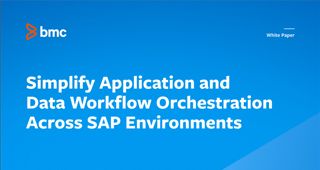SAP® Business Warehouse (BW) is a powerful data warehousing and analytics solution provided by SAP. It offers various tools and functions to help companies integrate, transform, and consolidate business information from different sources, including both SAP applications and external data sources.
One essential component of SAP BW is the extract, transform, load (ETL) process, which refers to the collection of objects and tools that facilitate the extraction, transformation, and loading of data from diverse data formats into the SAP BW system to ensure that it is harmonized, standardized, and made available for reporting and analysis within SAP BW.
With SAP BW ETL, users can import data from a wide range of sources, including Microsoft Excel files, text files, databases, SAP ECC (ERP Central Component), and other SAP systems. The data can be extracted using standard extractors or custom-built extractors based on specific business requirements. Once the data is extracted, it can be transformed using various techniques such as data cleansing, aggregation, derivation, and consolidation to ensure data quality and consistency.
After the transformation phase, the data is loaded into the SAP BW system, where it is organized into data structures like InfoCubes, DataStore Objects (DSOs), and InfoObjects. These structures enable efficient data storage, retrieval, and analysis within the SAP BW environment.
By leveraging SAP BW ETL capabilities, companies can create a centralized data repository that integrates data from multiple sources, allowing for comprehensive reporting, analytics, and decision-making. The ETL process plays a vital role in ensuring the accuracy, consistency, and availability of data for business intelligence purposes in SAP BW.
The SAP BW Process Chain is a SAP BW process that executes Infopackages and DTP’s (Data Transfer process). A process chain is a sequence of interconnected processes that can be scheduled to run in the background based on specific events or time triggers. These processes can be designed to trigger subsequent events, enabling the automation of complex data flows and transformations within SAP BW. The requests are formulated by the InfoSource and Source System and differentiated between master and transactional data. The Scheduler allows you to determine when data is requested and from where, updating it into the appropriate data targets.
It allows you to define scheduling parameters, such as time triggers or event-based triggers, for the extraction and loading processes. By configuring the Scheduler, you can automate the data flow and ensure that the required data is retrieved from the appropriate sources at the designated intervals.
Managing ETL of data can become challenging when multiple Source Systems are connected to a single SAP BW system. The complexity arises from the need to schedule and coordinate these processes and consider the dependencies and relationships between different data sources and targets. It requires careful planning, designing of process chains, and setting up dependencies and triggers to ensure data consistency and timely updates. Failed data management processes, especially those not detected quickly, can have severe consequences for projects, departments, and the business, as well as lead to the generation of incorrect or incomplete data, causing disruptions and setbacks in various areas of an organization.
Here are some potential impacts of such situations:
- Disrupted projects: Data plays a crucial role in project execution, decision-making, and analysis. If data processes fail, they can delay project timelines, trigger inaccurate project insights, and hinder progress, resulting in project disruptions, increased costs, and dissatisfied stakeholders.
- Derailed departments: Data serves as the foundation for many departmental activities and processes. If data quality issues occur due to hanging jobs or failed processes, they can negatively impact departmental operations reporting, and analysis and lead to inefficient business processes. Departments may then struggle to make informed decisions, leading to suboptimal outcomes.
- Damaged reputations: Inaccurate or incomplete data can undermine an organization’s reputation, particularly if it leads to errors in customer interactions, financial reporting, compliance, or other critical areas. Reputational damage can be long-lasting, affecting customer trust, partner relationships, and overall brand perception.
Job scheduling challenges
Scheduling jobs in SAP systems is a routine operational task for many SAP customers. The transaction SM37 is commonly used within SAP systems to manage and execute batch jobs. However, in cases where complex job scheduling and dependencies exist across multiple SAP systems, customers often opt for third-party batch scheduling tools.
When SAP systems experience downtime or become unavailable, customers relying on third-party job scheduling tools may find that scheduled jobs do run as intended, leading to potential disruptions and delays in business processes, with business impact and potential remediation costs escalating according to how many systems are impacted.
To mitigate the risks associated with system unavailability, it is crucial for SAP customers to have contingency plans that include redundancy and failover options for SAP systems, backup and recovery strategies, and system monitoring to promptly identify and address any issues that may arise. Additionally, regular testing and maintenance of the job scheduling processes can help identify potential problems early on and minimize the impact of job failures.
Situation/Current state in job scheduling
- SAP BW integrates data and schedules jobs from different sources, transforms and consolidates the data, performs data cleansing, and stores data.
- SAP BW is becoming the norm for most enterprise businesses.
- Since there are multiple sources of both SAP and non-SAP enterprise data, customers require cross-application and cross-platform visibility, generally in real time.
- Businesses depend on IT to provide constant job scheduling and dependencies within those jobs.
- SAP BW has its own scheduling and monitoring tools, which connect easily to other SAP applications, however mapping to non-SAP applications requires either an internal resource to write the code or delay a solution, or simply ignore the problem.
Pain/Challenge
- Job scheduling becomes a challenge as multiple source systems are connected and need to manage job dependencies.
- Overall visibility is very poor when SAP is interfaced with multiple non-SAP source systems. Job interception, scheduling, and monitoring all problematic due to the vast, complex SAP BW landscape, and critical SAP BW jobs often fail and are not scheduled in a timely manner. In other instances, less critical jobs are ignored due to the lack of robust scheduling. If jobs fail, updates to other dependent systems and processes are affected.
- SAP BW integrates with multiple SAP and non-SAP systems. If jobs and process are not scheduled effectively, all upstream and downstream system will be impacted, increasing load time for business reports and delaying key metrics or key performance indicators (KPIs).
Control-M for SAP® BW job scheduling benefits
One solution is to automate your SAP BW landscape with Control-M’s job monitoring and orchestration tools. Control-M for SAP® creates and manages SAP ECC, SAP S/4HANA®, SAP BW, and data archiving jobs, and supports any application in the SAP ecosystem, eliminating time, complexity, and any specialized knowledge requirements and securely managing the dependencies and silos between SAP and non-SAP systems. With Control-M for SAP®, you can:
- Easily create, manage, and orchestrate complex SAP services, jobs, processes, and workflows across on-premises, cloud, and hybrid environments
- Automate all SAP BW process chains and get interdependency with Control-M
- Orchestrate jobs between different SAP systems such as S/4HANA, ECC, SCM, and BW
- Schedule all jobs going from SAP BW using Open Hub and then maintain Open Hub jobs with Control M
- Securely manage dependencies and silos between SAP and non-SAP tasks (e.g., file transfers, database access) and centralize management of scheduling activities
- Automate complex process flows in BW using Control-M event-controlled processing
- Centrally control and schedule jobs within the Control-M scheduling dashboard
- Reschedule failed and dependent processes
- Schedule broadcasting jobs on an as-needed basis
- Schedule housekeeping jobs, monitor the growth of the database, purge all unwanted objects and data, and keep system clean
- Halt and restart jobs to make system copies and perform system upgrades and refreshes
Conclusion
Enjoy 360-degree visibility of the data pipeline at every stage. Control-M for SAP® is the industry-leading application and data workflow orchestration software for SAP environments, with capabilities that include workflow and data pipeline orchestration, SLA management, managed file transfer, and job scheduling and monitoring. SAP S/4HANA-certified, the solution can help you smoothly transition from ECC to S/4 HANA cloud-based enterprise resource planning (ERP) with simultaneous support for both platforms and modules. Control-M for SAP® and Control-M Saas can also help reduce operational costs, improve efficiency, and increase performance by proactively monitoring jobs before they fail, reducing unnecessary system downtime and improving system performance and availability.







